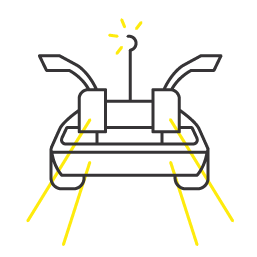We are now coming to the final blogs in our merger and acquisition [M+A] series having already unpacked how to structure the deal, tailor the contract to the circumstances, undertake due diligence, earnouts + working capital calculations and obtaining third-party approvals required to seal the deal.
The next and one of the final step is preparing for completion and closing the deal of an M+A transaction. Whilst this step is commonly known as completion, it is often also referred to as the ‘integration phase of the transaction’, ‘closing the deal’ and the ‘acquirer bringing the target company under its control’.
getting ready for completion
Below is a general summary, outlining the key factors to consider when completion is fast approaching for an acquisition. It should be noted there are many completion steps that are specific to each industry and the licences that are required to operate in that industry are not included in this summary:
- release of encumbrances: It must be made sure that no securities are registered against equipment or assets of the business [in an asset sale structure] or shares [in a share sale structure]. If securities are registered, they must be released before completion and releases handed over at completion.
- employees: Employees must to be notified of the upcoming M+A and whether the buyer will be taking over their employment. The seller must notify the buyer of what staff entitlements each employee is owed which may be adjusted at settlement [depending on the drafting of the transaction documentation].
- leases: If a lease is required to be transferred [which will require the landlord’s consent], then documentation must be prepared and handed over at settlement.
- intellectual property: The seller’s intellectual property will need to be transferred [such as trademarks, patents, plant breeder rights, designs, social media accounts, email addresses, domain names and websites].
- contracts: The seller must arrange for the transfer [or termination] of any business contracts they have afoot with third parties as per the terms of the transaction documentation.
- equipment: Depending on the terms of the transaction documentation, the seller must contact any owners of hired equipment for the business and have them transferred to the buyer.
- stock: For some businesses that carry stock, a stocktake calculation and adjustment is an essential completion requirement. When a stocktake is required the stock should be calculated in accordance with the stocktake guideline negotiated in the transaction documentation.
- funding: The buyer must also ensure all funding is organised and prepared to cover the costs of the purchase price of the M+A. This includes liaising with banks and relevant third parties.
- evidence of title – share purchase documents: If the M+A was structured through a share sale, then relevant share transfer documents, original share certificates, new share certificates and resolutions [including any change of office holders, revocation of powers of attorney and variation of bank authorities] will need to be prepared and handed over at settlement for lodgement with ASIC.
- evidence of title – asset purchase documents: If the M+A was structured through an asset share sale, then relevant title paperwork for the assets and possession of the assets. For items that are registered [such as motor vehicles] the necessary approval paperwork is needed to allow a change of title.
predominant focus
With respect to a merger, while the majority of the above applies, the main and predominant focus is on the merge and integration of the two companies becoming one new company. This may include:
- Rebranding,
- Preparing strategies for management,
- Teams of the merging companies,
- Entity planning and compliance work such as entity set-up,
- Consolidations + annual filings,
- Office restructuring, and
- Other activities to ensure it is business as usual.
completion date
It is crucial that a settlement statements is prepared and lists everything that must to be provided by each party at completion, including payment directions for where all funds are to be paid.
At settlement, the parties will attend the settlement location at the settlement time and provide all documents required for each party. This also includes ensuring the necessary payments are made.
we’re here to help!
If you are considering purchasing a business or shares in a company, give the team at businessDEPOT Legal a buzz on 1300BDEPOT or get in touch via legal@businessdepot.com.au to discuss how we can help you.
Stay tuned for the final part of our merger and acquisition blog series on post-settlement completion, representations and warranties.
general advice disclaimer
The information provided on this website is a brief overview and does not constitute any type of advice. We endeavour to ensure that the information provided is accurate however information may become outdated as legislation, policies, regulations and other considerations constantly change. Individuals must not rely on this information to make a financial, investment or legal decision. Please consult with an appropriate professional before making any decision.




















































